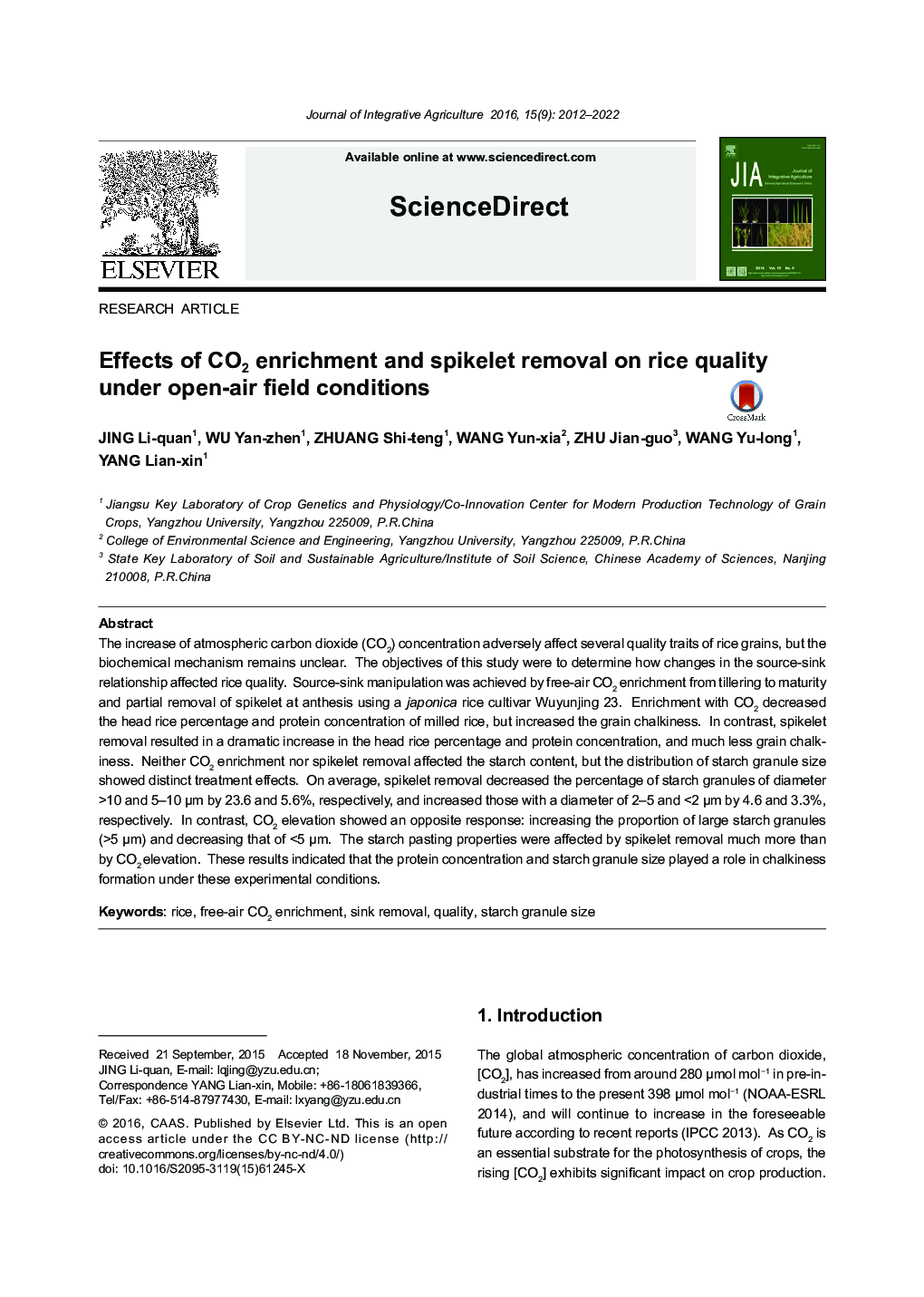| Article ID | Journal | Published Year | Pages | File Type |
|---|---|---|---|---|
| 10179950 | Journal of Integrative Agriculture | 2012 | 11 Pages |
Abstract
The increase of atmospheric carbon dioxide (CO2) concentration adversely affect several quality traits of rice grains, but the biochemical mechanism remains unclear. The objectives of this study were to determine how changes in the source-sink relationship affected rice quality. Source-sink manipulation was achieved by free-air CO2 enrichment from tillering to maturity and partial removal of spikelet at anthesis using a japonica rice cultivar Wuyunjing 23. Enrichment with CO2 decreased the head rice percentage and protein concentration of milled rice, but increased the grain chalkiness. In contrast, spikelet removal resulted in a dramatic increase in the head rice percentage and protein concentration, and much less grain chalkiness. Neither CO2 enrichment nor spikelet removal affected the starch content, but the distribution of starch granule size showed distinct treatment effects. On average, spikelet removal decreased the percentage of starch granules of diameter >10 and 5-10 µm by 23.6 and 5.6%, respectively, and increased those with a diameter of 2-5 and <2 µm by 4.6 and 3.3%, respectively. In contrast, CO2 elevation showed an opposite response: increasing the proportion of large starch granules (>5 µm) and decreasing that of <5 µm. The starch pasting properties were affected by spikelet removal much more than by CO2 elevation. These results indicated that the protein concentration and starch granule size played a role in chalkiness formation under these experimental conditions.
Related Topics
Life Sciences
Agricultural and Biological Sciences
Agricultural and Biological Sciences (General)
Authors
Li-quan JING, Yan-zhen WU, Shi-teng ZHUANG, Yun-xia WANG, Jian-guo ZHU, Yu-long WANG, Lian-xin YANG,
